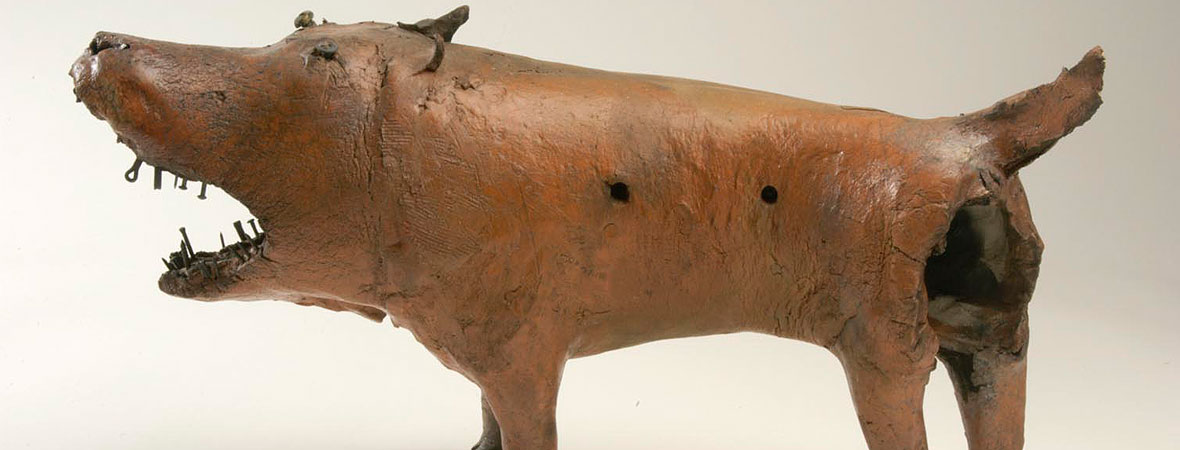18th October 2015 to 31st January 2016
Opening hours: Monday–Saturday,10am–8pm. Sunday, 1pm–5pm

Image: Fish Dog by Susan Halls, 1997
This exhibition takes its title from David Cleverley’s ceramic sculpture, Adam naming the animals. The work makes reference to nineteenth century Staffordshire figures and is based on a Biblical theme that has a long history in folk art and popular culture.
‘And Adam gave names to all cattle, and to the fowl of the air, and to every beast of the field’ Genesis 2:20
Animals and birds have been interpreted in clay from earliest times and were made many thousands of years before pottery vessels. Talisman or toy, lucky charm or mantelpiece ornament, animal models are found in all cultures and continue to be compelling subject matter for contemporary ceramic artists. The exhibition draws on works in the Ceramic Collection from many different parts of the world and starts, on either side of the doors, with two terracotta [guardian] sculptures made at the International Ceramic Festival in 2007 by the traditional Indian sculptor Palaniappan Muthukaruppan
Animal forms can shapeshift; birds can become jugs and teapots or disguise themselves as ceramic balloons. Cow creamer milk jugs were popular mass-produced items in the nineteenth century. They would have been bought mostly as gifts and displayed on kitchen dressers. Justin James plays with this iconic form, creating a witty take on the cow creamer with his cow/milk carton hybrid jug.
Some of the artists here are inspired by stories. Welsh folktales of wild dogs and drowned villages are a source for Catrin Howell’s work. Others fuse human and animal forms in order to comment on the human condition. Meri Wells’ figures are forever locked apart in mutual misunderstanding. Christie Brown’s human head with rabbit’s ears contains an ironic comment on the classical tradition of sculpture and yet has overtones of a hen night costume. In a starkly modern comment from South Africa artist Wonderboy Nxumalo inscribed his monkey mug with a warning about HIV/AIDS.
These depictions of domestic or wild and fantasy animals carry cultural messages. They may be light hearted or puzzling but they can also be disturbing and deeply serious.
